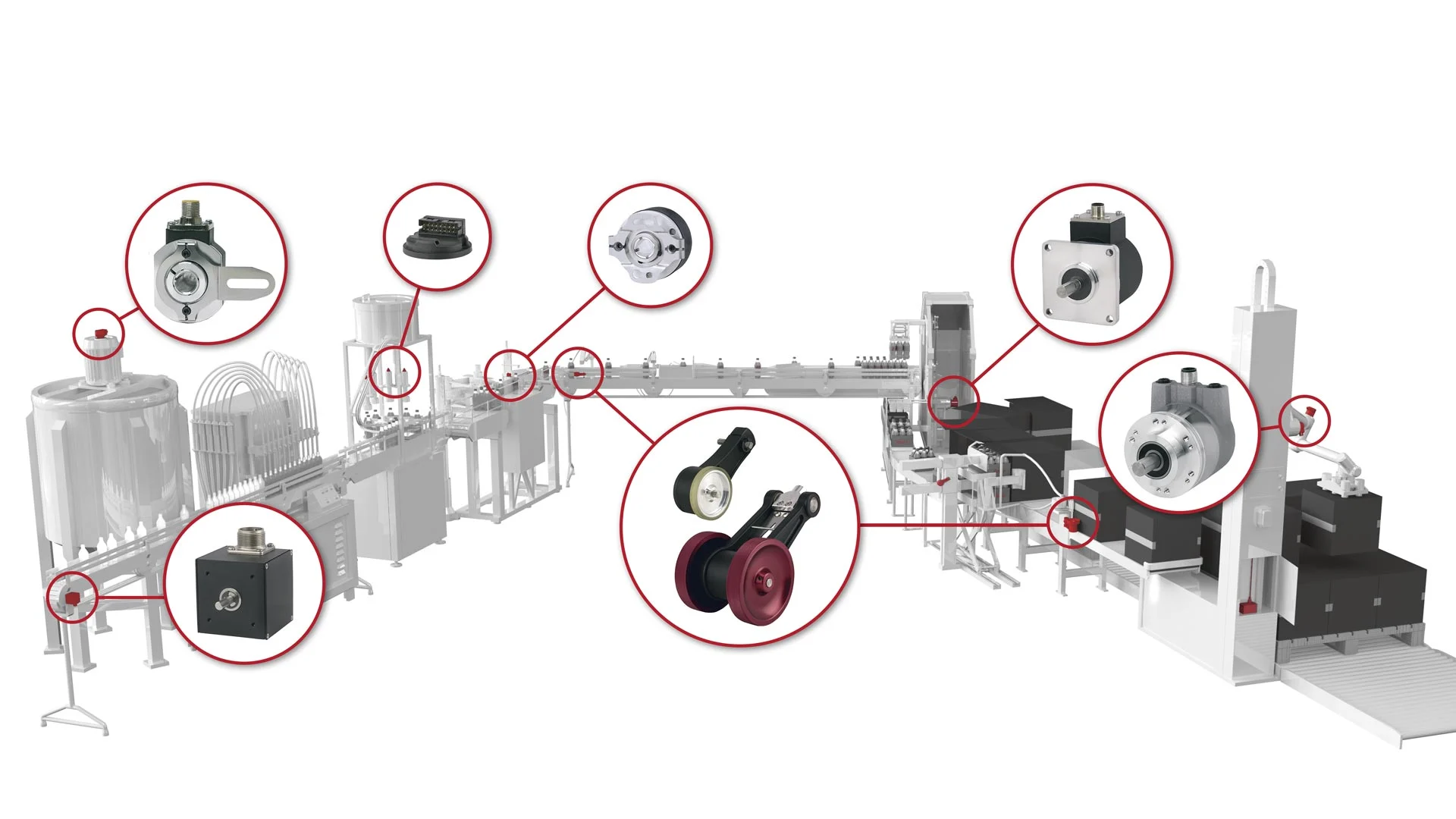
28
From Motion to Data: Safety Encoder Technology
Encoders and motor control
The Vital Role of Encoders in Modern Automation
In the world of automation and robotics, precision and accuracy are paramount. Whether it’s controlling the movement of a robotic arm, tracking the position of a conveyor belt, or ensuring the precise rotation of a motor shaft, the ability to monitor and control motion is crucial. This is where encoders come into play. Encoders are specialised sensors that convert mechanical motion into digital signals, allowing machines to understand and respond to their own movements.
Encoders are the silent heroes in many industrial and technological applications, providing the feedback necessary for systems to perform with high precision. From simple tasks like measuring the rotation of a motor to complex operations in CNC machines and robotic systems, encoders ensure that every movement is accounted for and executed accurately. In this blog, we’ll delve into the different types of encoders, how they work, and their vital role in various applications, helping you understand why they are a critical component in modern automation.
How Encoders Work: A Deep Dive into Precision
OPKON Optic Hollow Shaft Encoders
At their core, encoders function by detecting and converting the movement of a mechanical component—such as a shaft—into an electrical signal. This is typically achieved through the interaction of a rotating disc and a sensor. The disc, attached to the rotating element of the machine, is marked with a series of lines or patterns. As the disc rotates, these markings pass by a stationary sensor, which detects the changes in light or magnetic fields and generates corresponding electrical pulses.
These pulses represent the motion of the shaft. By counting the pulses, the system can determine how far the shaft has moved. The frequency of the pulses can be used to calculate speed, and the direction of movement can be inferred based on the sequence in which the pulses are received.
Incremental Encoders:
Incremental encoders, such as the OPKON Optic Hollow Shaft, Semi-Hollow Shaft, and Shaft Encoders, generate a series of pulses as the shaft rotates. Each pulse corresponds to a specific increment of movement. These pulses are counted by a control system to determine the position relative to a starting point. If the power is lost, the system loses track of the position, and a reference point must be established again upon restart.
Absolute Encoders:
Absolute encoders, like the ReeR – SAFECODER SC3, operate differently. Instead of generating pulses, they provide a unique digital code for each position of the shaft. This means that even after a power loss, the exact position of the shaft can be determined immediately upon power restoration. Absolute encoders are particularly useful in applications where maintaining accurate position information is critical, even after interruptions.
Signal Generation and Processing
The signals generated by encoders are typically in the form of digital pulses or analog signals. In the case of incremental encoders, the pulses are counted by the control system, which uses this information to calculate parameters like speed, distance traveled, and direction. The control system can then make adjustments to maintain the desired operation.
For absolute encoders, the unique code corresponding to each position is processed to determine the exact location of the shaft. This information is crucial for applications where precise positioning is required, such as in robotics or CNC machinery.
Internal Mechanisms
The internal mechanisms of encoders can vary depending on the type, but they generally consist of a rotating disc, a stationary sensor, and a signal processing unit. The disc may be made of glass, metal, or plastic and is marked with lines, patterns, or magnets.
Optical Encoders: These use a disc with transparent and opaque sections. A light source shines through the disc, and a photodetector reads the light patterns to generate pulses.
Magnetic Encoders: These use a disc or ring with embedded magnets. As the disc rotates, a magnetic sensor detects changes in the magnetic field and generates corresponding signals.
Capacitive Encoders: These detect changes in capacitance as the disc rotates. The sensor measures the variation in capacitance to determine position.
In all types of encoders, the signal generated by the sensor is sent to a signal processing unit, where it is converted into a usable form for the control system. This processed signal can then be used to adjust motor speeds, control the position of mechanical parts, or trigger specific actions based on the encoder’s readings.
At their core, encoders function by detecting and converting the movement of a mechanical component—such as a shaft—into an electrical signal. This is typically achieved through the interaction of a rotating disc and a sensor. The disc, attached to the rotating element of the machine, is marked with a series of lines or patterns. As the disc rotates, these markings pass by a stationary sensor, which detects the changes in light or magnetic fields and generates corresponding electrical pulses.
These pulses represent the motion of the shaft. By counting the pulses, the system can determine how far the shaft has moved. The frequency of the pulses can be used to calculate speed, and the direction of movement can be inferred based on the sequence in which the pulses are received.
Incremental encoders, such as the OPKON Optic Hollow Shaft, Semi-Hollow Shaft, and Shaft Encoders, generate a series of pulses as the shaft rotates. Each pulse corresponds to a specific increment of movement. These pulses are counted by a control system to determine the position relative to a starting point. If the power is lost, the system loses track of the position, and a reference point must be established again upon restart.
Absolute encoders, like the ReeR – SAFECODER SC3, operate differently. Instead of generating pulses, they provide a unique digital code for each position of the shaft. This means that even after a power loss, the exact position of the shaft can be determined immediately upon power restoration. Absolute encoders are particularly useful in applications where maintaining accurate position information is critical, even after interruptions.
The signals generated by encoders are typically in the form of digital pulses or analog signals. In the case of incremental encoders, the pulses are counted by the control system, which uses this information to calculate parameters like speed, distance traveled, and direction. The control system can then make adjustments to maintain the desired operation.
For absolute encoders, the unique code corresponding to each position is processed to determine the exact location of the shaft. This information is crucial for applications where precise positioning is required, such as in robotics or CNC machinery.
The internal mechanisms of encoders can vary depending on the type, but they generally consist of a rotating disc, a stationary sensor, and a signal processing unit. The disc may be made of glass, metal, or plastic and is marked with lines, patterns, or magnets.
Optical Encoders: These use a disc with transparent and opaque sections. A light source shines through the disc, and a photodetector reads the light patterns to generate pulses.
Magnetic Encoders: These use a disc or ring with embedded magnets. As the disc rotates, a magnetic sensor detects changes in the magnetic field and generates corresponding signals.
Capacitive Encoders: These detect changes in capacitance as the disc rotates. The sensor measures the variation in capacitance to determine position.
In all types of encoders, the signal generated by the sensor is sent to a signal processing unit, where it is converted into a usable form for the control system. This processed signal can then be used to adjust motor speeds, control the position of mechanical parts, or trigger specific actions based on the encoder’s readings.
Encoder Types and Specifications
Specifications:
- Type: Optical Incremental Encoder
- Shaft Size: Available in various sizes, typically from 6 mm to 40 mm.
- Resolution: Up to 5000 pulses per revolution (PPR)
- Output Signals: A/B quadrature signals with optional index pulse (Z)
- Supply Voltage: 5V DC, 12V DC, or 24V DC options
- Operating Temperature: -20°C to +85°C
- Protection Rating: IP64 (dust-tight and splash-proof
Key Features:
- Designed for easy installation on motor shafts without the need for a coupling.
- High-resolution feedback suitable for precision motor control applications.
- Robust construction with a focus on durability in industrial environments.
Applications:
- CNC machines
- Robotics
- Conveyor systems
- Industrial automation
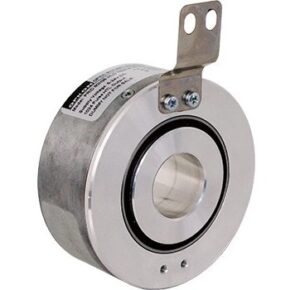
Specifications:
- Type: Optical Incremental Encoder
- Shaft Size: Typically 6 mm to 15 mm
- Resolution: Up to 2048 pulses per revolution (PPR)
- Output Signals: A/B quadrature signals with optional index pulse (Z)
- Supply Voltage: 5V DC, 12V DC, or 24V DC options
- Operating Temperature: -20°C to +85°C
- Protection Rating: IP65 (dust-tight and protected against water jets)
Key Features:
- Combines the benefits of hollow shaft encoders with the flexibility of shafted models.
- Compact design, making it ideal for applications with limited space.
- High accuracy and reliable performance in demanding environments.
Applications:
- Servo motors
- Automated guided vehicles (AGVs)
- Textile machinery
- Packaging machines
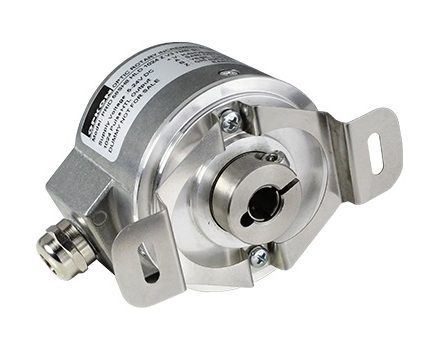
Specifications:
- Type: Optical Incremental Encoder
- Shaft Size: Standard shaft sizes ranging from 4 mm to 12 mm
- Resolution: Up to 10000 pulses per revolution (PPR)
- Output Signals: A/B quadrature signals with optional index pulse (Z)
- Supply Voltage: 5V DC, 12V DC, or 24V DC options
- Operating Temperature: -20°C to +85°C
- Protection Rating: IP67 (dust-tight and protected against temporary immersion)
Key Features:
- Solid shaft design suitable for direct coupling to motor shafts.
- High resolution for applications requiring precise position and speed control.
- Enhanced environmental protection for use in harsh industrial conditions.
Applications:
- Industrial robotics
- Elevator systems
- Motor feedback systems
- Printing presses
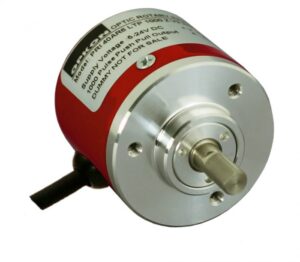
Specifications:
- Type: Incremental Safety Encoder
- Resolution: Up to 8192 pulses per revolution (PPR)
- Output Signals: HTL (High Threshold Logic) output with A/B quadrature signals and an index pulse (Z)
- Supply Voltage: 10V to 30V DC
- Safety Certification: SIL2 (Safety Integrity Level 2) and PL d (Performance Level d) certified
- Operating Temperature: -40°C to +100°C
- Protection Rating: IP65 (dust-tight and protected against water jets)
Key Features:
- Safety-certified encoder designed for use in safety-critical applications.
- HTL output ensures reliable signal transmission over long distances.
- Robust construction with high resistance to shock and vibration.
Applications:
- Safety-related motor control systems
- Elevators and escalators
- Automotive assembly lines
- Wind turbines
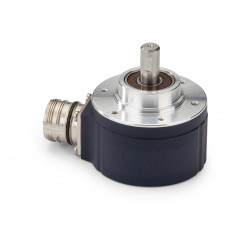
Specifications:
- Type: Sine/Cosine Absolute Safety Encoder
- Resolution: 1024 sine/cosine signals per revolution, with interpolation for high resolution
- Output Signals: Sine/Cosine analog signals, compatible with safety controllers
- Supply Voltage: 5V DC or 12V DC
- Safety Certification: SIL3 (Safety Integrity Level 3) and PL e (Performance Level e) certified
- Operating Temperature: -25°C to +85°C
Key Features:
- High safety certification for use in critical applications requiring absolute position feedback.
- Sine/Cosine output allows for smooth and continuous position measurement.
- Compact and rugged design for installation in space-constrained and harsh environments.
Applications:
- Robotic arms in safety zones
- Safety doors and gates
- Industrial automation with safety requirements
- Automated guided vehicles (AGVs) with safety protocols
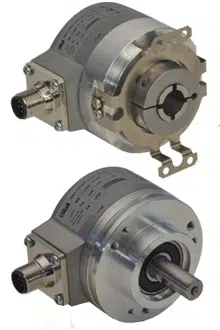
Specifications:
- Type: Optical Incremental Encoder
- Shaft Size: Available in various sizes, typically from 6 mm to 40 mm.
- Resolution: Up to 5000 pulses per revolution (PPR)
- Output Signals: A/B quadrature signals with optional index pulse (Z)
- Supply Voltage: 5V DC, 12V DC, or 24V DC options
- Operating Temperature: -20°C to +85°C
- Protection Rating: IP64 (dust-tight and splash-proof
Key Features:
- Designed for easy installation on motor shafts without the need for a coupling.
- High-resolution feedback suitable for precision motor control applications.
- Robust construction with a focus on durability in industrial environments.
Applications:
- CNC machines
- Robotics
- Conveyor systems
- Industrial automation
- Type: Optical Incremental Encoder
- Shaft Size: Available in various sizes, typically from 6 mm to 40 mm.
- Resolution: Up to 5000 pulses per revolution (PPR)
- Output Signals: A/B quadrature signals with optional index pulse (Z)
- Supply Voltage: 5V DC, 12V DC, or 24V DC options
- Operating Temperature: -20°C to +85°C
- Protection Rating: IP64 (dust-tight and splash-proof
- Designed for easy installation on motor shafts without the need for a coupling.
- High-resolution feedback suitable for precision motor control applications.
- Robust construction with a focus on durability in industrial environments.
- CNC machines
- Robotics
- Conveyor systems
- Industrial automation

Specifications:
- Type: Optical Incremental Encoder
- Shaft Size: Typically 6 mm to 15 mm
- Resolution: Up to 2048 pulses per revolution (PPR)
- Output Signals: A/B quadrature signals with optional index pulse (Z)
- Supply Voltage: 5V DC, 12V DC, or 24V DC options
- Operating Temperature: -20°C to +85°C
- Protection Rating: IP65 (dust-tight and protected against water jets)
Key Features:
- Combines the benefits of hollow shaft encoders with the flexibility of shafted models.
- Compact design, making it ideal for applications with limited space.
- High accuracy and reliable performance in demanding environments.
Applications:
- Servo motors
- Automated guided vehicles (AGVs)
- Textile machinery
- Packaging machines
- Type: Optical Incremental Encoder
- Shaft Size: Typically 6 mm to 15 mm
- Resolution: Up to 2048 pulses per revolution (PPR)
- Output Signals: A/B quadrature signals with optional index pulse (Z)
- Supply Voltage: 5V DC, 12V DC, or 24V DC options
- Operating Temperature: -20°C to +85°C
- Protection Rating: IP65 (dust-tight and protected against water jets)
- Combines the benefits of hollow shaft encoders with the flexibility of shafted models.
- Compact design, making it ideal for applications with limited space.
- High accuracy and reliable performance in demanding environments.
- Servo motors
- Automated guided vehicles (AGVs)
- Textile machinery
- Packaging machines

Specifications:
- Type: Optical Incremental Encoder
- Shaft Size: Standard shaft sizes ranging from 4 mm to 12 mm
- Resolution: Up to 10000 pulses per revolution (PPR)
- Output Signals: A/B quadrature signals with optional index pulse (Z)
- Supply Voltage: 5V DC, 12V DC, or 24V DC options
- Operating Temperature: -20°C to +85°C
- Protection Rating: IP67 (dust-tight and protected against temporary immersion)
Key Features:
- Solid shaft design suitable for direct coupling to motor shafts.
- High resolution for applications requiring precise position and speed control.
- Enhanced environmental protection for use in harsh industrial conditions.
Applications:
- Industrial robotics
- Elevator systems
- Motor feedback systems
- Printing presses
- Type: Optical Incremental Encoder
- Shaft Size: Standard shaft sizes ranging from 4 mm to 12 mm
- Resolution: Up to 10000 pulses per revolution (PPR)
- Output Signals: A/B quadrature signals with optional index pulse (Z)
- Supply Voltage: 5V DC, 12V DC, or 24V DC options
- Operating Temperature: -20°C to +85°C
- Protection Rating: IP67 (dust-tight and protected against temporary immersion)
- Solid shaft design suitable for direct coupling to motor shafts.
- High resolution for applications requiring precise position and speed control.
- Enhanced environmental protection for use in harsh industrial conditions.
- Industrial robotics
- Elevator systems
- Motor feedback systems
- Printing presses

Specifications:
- Type: Incremental Safety Encoder
- Resolution: Up to 8192 pulses per revolution (PPR)
- Output Signals: HTL (High Threshold Logic) output with A/B quadrature signals and an index pulse (Z)
- Supply Voltage: 10V to 30V DC
- Safety Certification: SIL2 (Safety Integrity Level 2) and PL d (Performance Level d) certified
- Operating Temperature: -40°C to +100°C
- Protection Rating: IP65 (dust-tight and protected against water jets)
Key Features:
- Safety-certified encoder designed for use in safety-critical applications.
- HTL output ensures reliable signal transmission over long distances.
- Robust construction with high resistance to shock and vibration.
Applications:
- Safety-related motor control systems
- Elevators and escalators
- Automotive assembly lines
- Wind turbines
- Type: Incremental Safety Encoder
- Resolution: Up to 8192 pulses per revolution (PPR)
- Output Signals: HTL (High Threshold Logic) output with A/B quadrature signals and an index pulse (Z)
- Supply Voltage: 10V to 30V DC
- Safety Certification: SIL2 (Safety Integrity Level 2) and PL d (Performance Level d) certified
- Operating Temperature: -40°C to +100°C
- Protection Rating: IP65 (dust-tight and protected against water jets)
- Safety-certified encoder designed for use in safety-critical applications.
- HTL output ensures reliable signal transmission over long distances.
- Robust construction with high resistance to shock and vibration.
- Safety-related motor control systems
- Elevators and escalators
- Automotive assembly lines
- Wind turbines

Specifications:
- Type: Sine/Cosine Absolute Safety Encoder
- Resolution: 1024 sine/cosine signals per revolution, with interpolation for high resolution
- Output Signals: Sine/Cosine analog signals, compatible with safety controllers
- Supply Voltage: 5V DC or 12V DC
- Safety Certification: SIL3 (Safety Integrity Level 3) and PL e (Performance Level e) certified
- Operating Temperature: -25°C to +85°C
Key Features:
- High safety certification for use in critical applications requiring absolute position feedback.
- Sine/Cosine output allows for smooth and continuous position measurement.
- Compact and rugged design for installation in space-constrained and harsh environments.
Applications:
- Robotic arms in safety zones
- Safety doors and gates
- Industrial automation with safety requirements
- Automated guided vehicles (AGVs) with safety protocols
- Type: Sine/Cosine Absolute Safety Encoder
- Resolution: 1024 sine/cosine signals per revolution, with interpolation for high resolution
- Output Signals: Sine/Cosine analog signals, compatible with safety controllers
- Supply Voltage: 5V DC or 12V DC
- Safety Certification: SIL3 (Safety Integrity Level 3) and PL e (Performance Level e) certified
- Operating Temperature: -25°C to +85°C
- High safety certification for use in critical applications requiring absolute position feedback.
- Sine/Cosine output allows for smooth and continuous position measurement.
- Compact and rugged design for installation in space-constrained and harsh environments.
- Robotic arms in safety zones
- Safety doors and gates
- Industrial automation with safety requirements
- Automated guided vehicles (AGVs) with safety protocols

Integration of Encoders in Modern Automation Systems
Encoders serve as a vital link between mechanical motion and digital control systems. They generate signals that are fed into controllers such as Programmable Logic Controllers (PLCs), motor controllers, or other processing units. These controllers then use the feedback provided by the encoder to adjust motor speeds, positions, or other parameters in real time, ensuring that the system operates within the specified tolerances.
In most applications, encoders are connected to the control system via signal cables, transmitting data in the form of pulses (for incremental encoders) or absolute position codes (for absolute encoders). These signals are often processed by a signal conditioning unit that filters noise and converts the signals into a format that the controller can easily interpret.
For safety-critical applications, like those using safety encoders such as the Wieland – SENC HTL Encoder or the ReeR SAFECODER SC3, the encoder’s output is also fed into safety relays or safety PLCs. These systems ensure that any deviation from expected parameters triggers an immediate response, such as stopping the machinery or alerting operators, thereby preventing accidents.
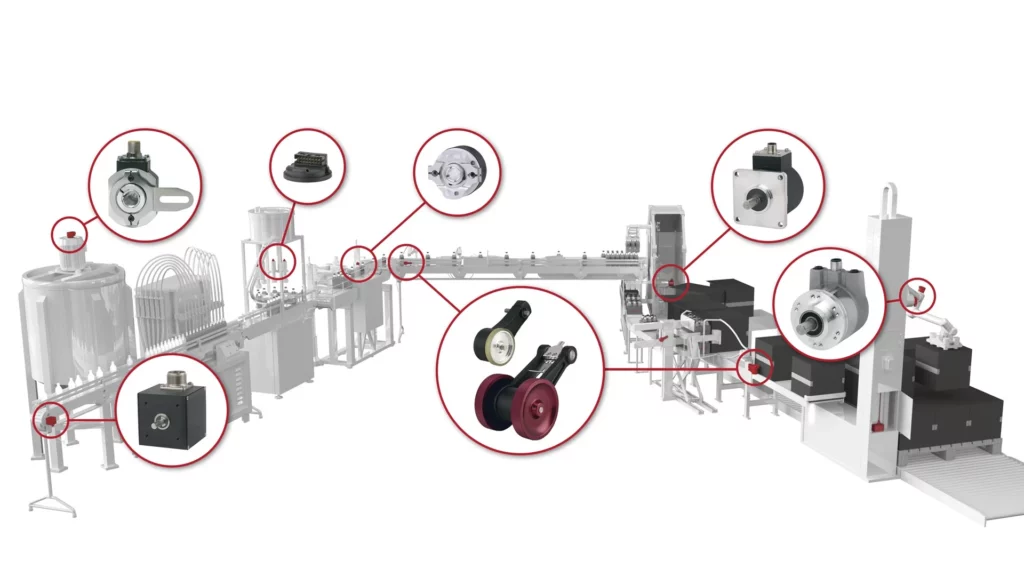
View our products


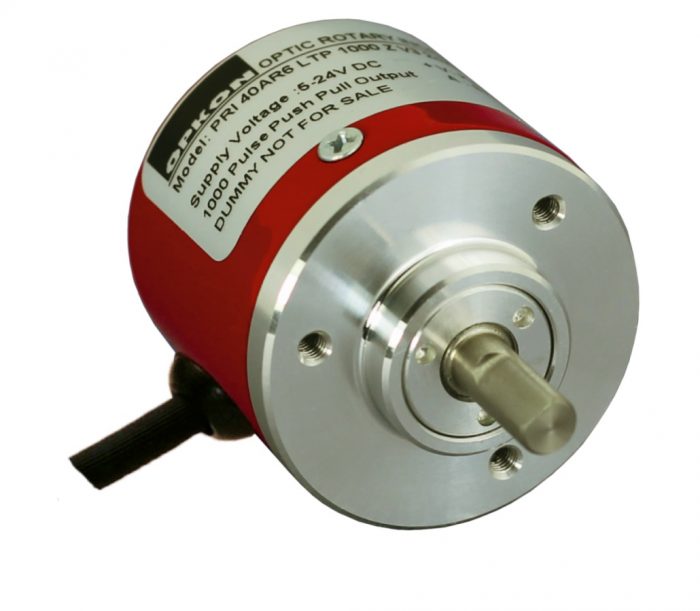


Conclusion
As automation continues to evolve, the role of encoders in motion control and data collection is more crucial than ever. These advanced sensors translate mechanical motion into digital signals, enabling seamless integration with modern industrial systems. Whether in robotics, manufacturing, or safety-critical applications, selecting the right encoder is vital for ensuring operational efficiency and precision.
High precision absolute encoders deliver unmatched accuracy for positioning systems, while incremental encoders provide real-time feedback for dynamic applications. The latest innovations in magnetic encoder technology enhance durability, making them ideal for harsh industrial environments.
For businesses requiring top-tier solutions, the OPKON ERC10 Series offers high-precision performance, while the OPKON PRI Series excels in incremental motion control. By leveraging these technologies, industries can optimize automation processes, reduce downtime, and enhance safety measures. As technology progresses, embracing the latest in encoder innovation ensures continued growth, efficiency, and reliability in industrial automation.
Closing the Loop: From Motion Feedback to Safety Response
Encoders may deliver the precision feedback necessary for intelligent motion control, but acting on that data requires a responsive and well-integrated safety architecture. The safety monitoring and output range at Venus Automation provides tailored solutions to meet the needs of diverse machines and projects.
A key component in modern safety systems is the safety PLC. These programmable devices allow custom safety logic, with flexible input/output terminal assignments. Venus Automation offers a variety of models, including the MOSAIC PLC from Reer, Samos PLC from Wieland, and GEMNIS PLC from Pizzato—each delivering advanced and reliable safety functionality.
Where complex programmability is unnecessary, alternative options such as the safety relay range are available. This includes standalone relays, time-delay relay, speed-monitoring relay, standstill monitoring and timer, PCB relay, relay expansion modules, and control relays like the emergency stop relay, safety edge relay, light curtains relay, and two-hand control relay. These options provide effective and application-specific safety responses.
Essential manual inputs such as the emergency stop remain integral to any safety architecture, despite lacking an automatic safety input. Venus Automation supplies complete solutions including emergency stop accessories, pushbuttons, two-hand stops, and specialized devices like the rope pull emergency stop. For modern installations, wireless safety systems, including wireless emergency stop units, remote controls and accessories, are also available.
Critical integration elements such as contact blocks are supplied to ensure seamless circuit connections. Additional safety monitoring components include the safety encoder, which monitors motor speed, and interlock devices such as tongue solenoid interlock switch and electro-magnetic switches. For more complex safety guarding, multifunctional gatebox units provide a consolidated interface, easily mounted on protective enclosures like concertina guards.
Access restriction and control can also be achieved through electronic key systems, ensuring machinery operates only under authorized conditions. Finally, for output-side protection, safety contactors and pneumatic safety valve solutions are available to ensure reliable machine stoppage when hazardous conditions are detected.